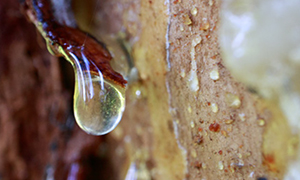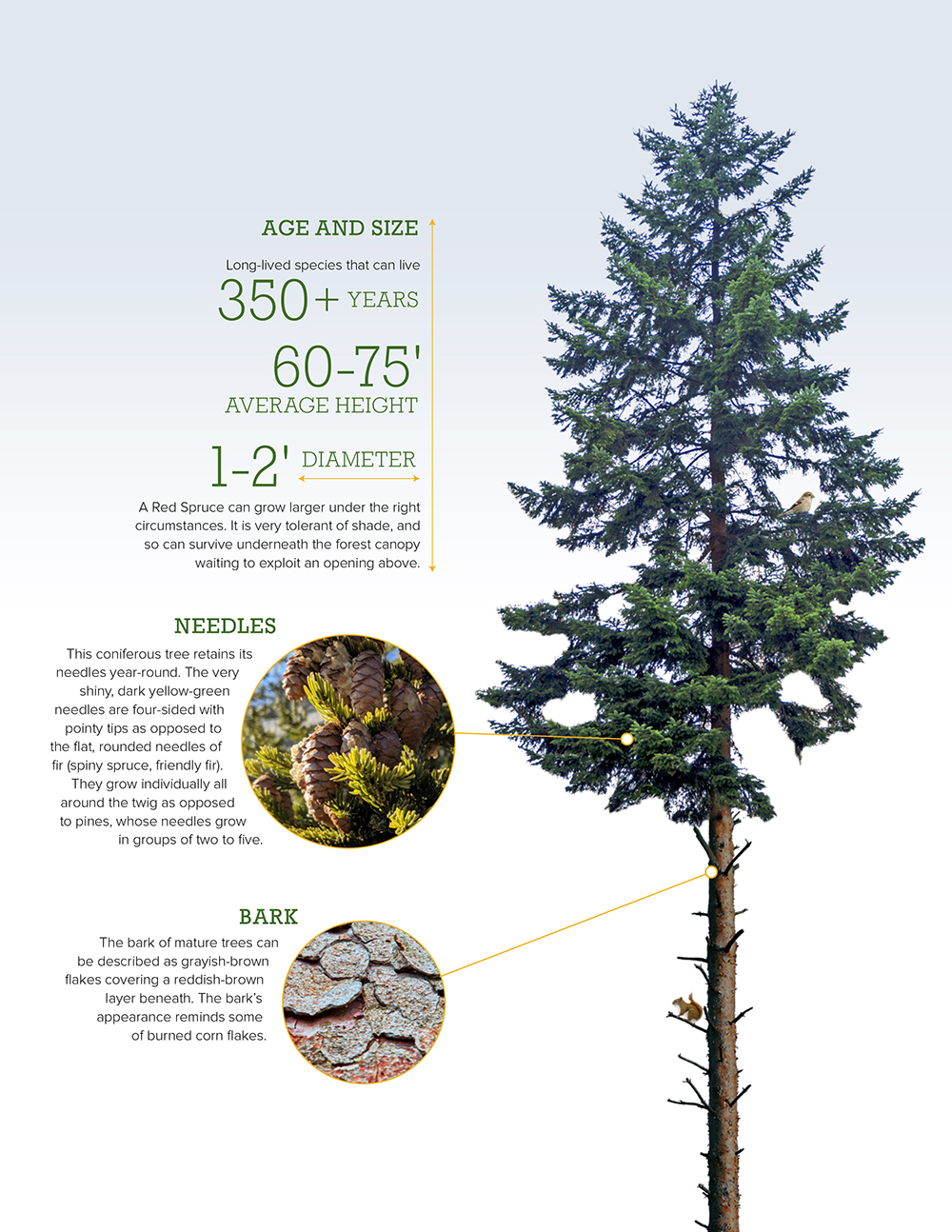Writing by Chris Pryor, Director of Forest Stewardship
Red Spruce graphic at bottom of page by Yellobee Studios
The Red Spruce (Picea rubens) is an important tree species in New England; together with Balsam Fir, it is the dominant tree used for lumber and pulp across much of Maine. There’s more to the species, however, than its growth pattern that makes for high-quality dimensional boards. One of the Red Spruce’s most interesting features is its wood’s unique resonance quality, which makes it highly valued for sounding boards in pianos, guitars, and other stringed instruments.
In New England, it is most commonly found from Downeast Maine across northern New Hampshire and Vermont, and then south along the Berkshire and Taconic ranges into northwestern Connecticut. More broadly, it can be found from the Maritime Provinces of Canada west to southern Ontario and south to the highlands of northern New Jersey and northeastern Pennsylvania. Farther south along the Appalachian Mountains, it can also be found at higher elevations in Virginia, West Virginia, North Carolina, and Tennessee.
Age and Size
Red Spruce is a long-loved species and can grow to more than 350 years in age. Average height is usually around 60-75 feet with a diameter of 1-2 feet, although the tree can grow larger under the right circumstances. Red Spruce is very tolerant of shade, and so can survive underneath the forest canopy waiting to exploit an opening above.
Identification
Red Spruce is a coniferous tree that retains its needles year-round. The shiny, yellow-green needles are four-sided with pointy tips as opposed to the flat, rounded needles of fir (spiny spruce, friendly fir). They grow individually all around the twig as opposed to pines, whose needles grow in groups of two to five. The bark of mature trees can be described as grayish-brown flakes covering a reddish-brown layer beneath. The bark’s appearance reminds some of burned corn flakes.
Wildlife Habitat
American Red Squirrels, voles, Spruce Grouse, and White-winged Crossbills rely on Red Spruce for a significant part of their diets. Red Spruce and spruce-fir forest types are used by many iconic wildlife species of the north woods, including American Marten, Snowshoe Hare, and Canada Lynx. Dense, mature spruce-fir stands also provide critical winter habitat for White-tailed Deer in the northern extent of its range.
Spruce Budworm is a major pest of the tree. Despite its name, the Spruce Budworm prefers to feed on Balsam Fir. However, it can cause severe defoliation and death of Red Spruce, especially when found in stands with a high percentage of Balsam Fir. The insect is native to New England and eastern Canada with periodic outbreaks every few decades. There is currently a major outbreak in Canada that threatens to move south into northern New England in the coming years.
Growing Conditions and Management
Red Spruce grows in a variety of ecosystems but the common theme is relatively poor or thin soils where it can survive and out compete other tree species. Common examples are the thin soils of coastal Downeast Maine and higher elevations of mountains throughout western Maine, the White Mountains, and Green Mountains. It can also be found growing in poorly drained, lower elevation flats throughout northern New England.
Red Spruce is managed throughout its range using a variety of techniques, from single-tree selection to clearcutting. Methods can vary depending on stand age, composition, density, and levels of regeneration. Harvested Red Spruce is valued for its lumber, given its light weight, strength, and straight grain. It is also pulped and used to make a variety of papers.
 Fun Fact
Fun Fact
Red Spruce provided the critical raw material to a booming spruce gum industry in Maine during the latter part of the 19th century. Sap that flowed from wounds in the trunk was collected after it had hardened. About 20 companies commercially sold spruce gum in Maine during that time period.
Red Spruce Infographic

